The Wrack
The Wrack is the Wells Reserve blog, our collective logbook on the web.
The Wrack is the Wells Reserve blog, our collective logbook on the web.
A pint-size boy held a fishing rod alongside his dad, enjoying a quiet midweek morning by the pond, when more than a dozen cars pulled into the lot behind them. The automotive intrusion didn't exactly shatter a peaceful solitude — their fishing spot was beside a busy state highway after all — but the father and son may have been curious to know — Why the sudden crowd?
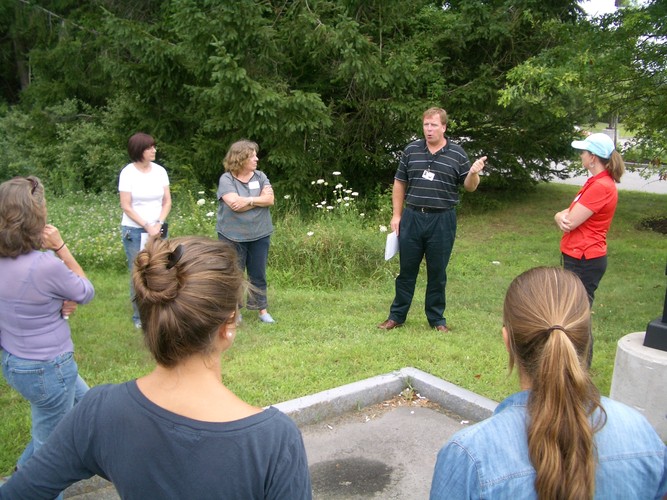 The arrivals were gathering to see Low Impact Development (LID) practices in use near Willand Pond in Somersworth, New Hampshire. The pond was a fitting spot to meet, given its history.
The arrivals were gathering to see Low Impact Development (LID) practices in use near Willand Pond in Somersworth, New Hampshire. The pond was a fitting spot to meet, given its history.
Willand Pond experienced a dramatic blue-green algae bloom following the Patriot's Day storm of 2007. Huge amounts of stormwater drained into the pond, causing the water level to rise well above normal and flooding areas that normally stay dry. Once upland vegetation was submerged, it died and decayed, releasing large amounts of phosphorus into the pond. The phosphorus and sunny summer days encouraged blue-green algae to flourish. The pond was closed for 4 months.
The pond suffered elevated cyanobacteria levels again in 2009 and 2010, prompting the N.H. Department of Environmental Services to issue precautionary warnings. These were in effect for shorter periods.
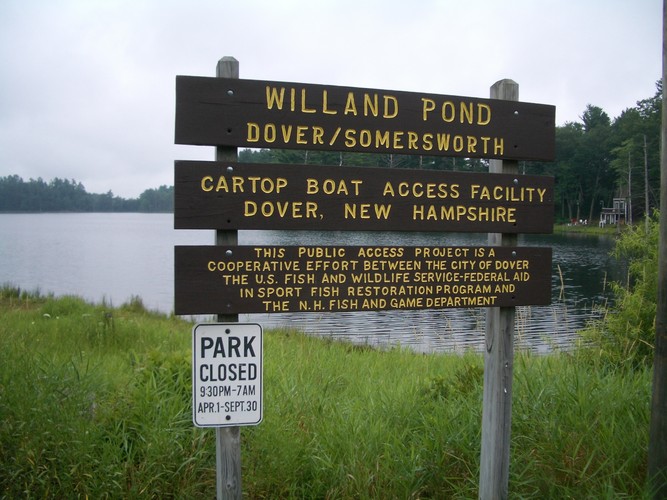
A closed recreation area was frustrating for residents and the city, which moved quickly to adjust how its storm water would be handled in the future. It was hard to ignore the fact that many new acres of impervious surface had been created recently in the commercial district adjacent to Willand Pond, increasing the potential for major runoff events.
Our LID tour leader, Dave Sharples, has for several years championed new ways to deal with Somersworth's storm water as the city's Director of Planning and Community Development. Sharples "sets the bar for stormwater management," according to CTP coordinator Chris Feurt, and he was a knowledgeable advocate for LID during this tour.
Sharples compared low impact development to conventional stormwater management, which often simply directs runoff to a detention pond where it gradually evaporates or seeps away. He explained that a holding pond and its associated drainage system usually steal valuable square footage from a developing area, while LID approaches typically require less surface area so developers can maximize the profitable use of a given piece of land. But exactly what constitutes LID?
The U.S. Environmental Protection Agency (EPA) defines low impact development as "an approach to land development (or re-development) that works with nature to manage stormwater as close to its source as possible."
A related term, green infrastructure, refers to "systems or practices that use or mimic natural processes to infiltrate, evapotranspirate,... or reuse stormwater or runoff on the site where it is generated."
In other words, don't let storm water flow on the surface; help it quickly recharge into the ground, preferably in a way that will also remove pollutants from the water.
Sharples guided our group to four sites near Willand Pond that have implemented LID practices. He emphasized that Somersworth does not take an overly prescriptive approach in its regulations, which allows him to meet the city's goals while offering some flexibility to developers.
At these sites, we heard about underground filtration rings and infiltration systems. Heard about because, as Sharples said, "Like most LID, you don't see it."
In one spot, instead of putting in a traditional catch basin the developer installed an set of chambers 8 feet under ground, over an area measuring 100 by 50 feet. The system is designed to trap oils, antifreeze, and suspended solids in successive stages, leading to clean water at the output. One participant remarked, "it's like a big septic system for the parking lot."
In a second spot nearby, infiltration is encouraged by slowing runoff with riprap and allowing it to seep down to a 24-inch perforated pipe buried in a 6-foot "stone blanket."
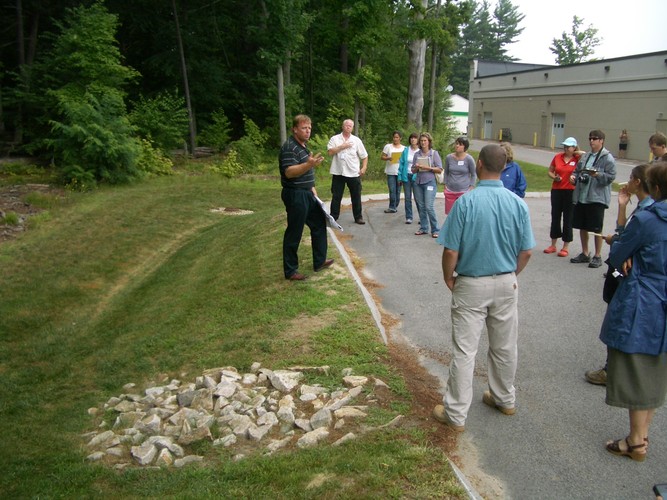
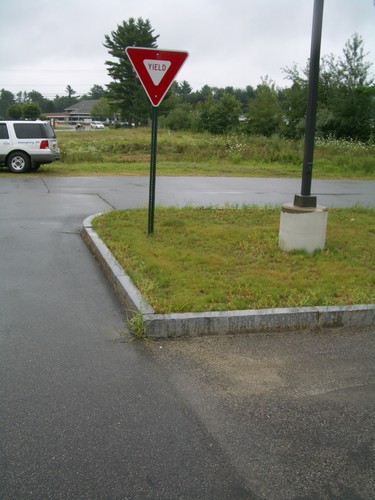 At Terrascape Park, the entire parking area is made of porous pavement over layers of gravel and sand. Not only is the lot pervious, but most pollutants are removed from the water in the underlying sand layer.
At Terrascape Park, the entire parking area is made of porous pavement over layers of gravel and sand. Not only is the lot pervious, but most pollutants are removed from the water in the underlying sand layer.
Just up the road at The Works, porous pavement was used for the parking stalls, but regular asphalt kept for the driving areas (access aisles). The "halfway" approach cut costs (installing porous pavement is more expensive than traditional pavement) and allayed some concern over the longevity of the relatively new porous asphalt.
While municipal development in Somersworth is not subject to the same stormwater regulations as commercial development, Sharples encouraged a voluntary approach at the new police headquarters. Here the LID method was bioretention, using specific soils and plantings to slow the flow and allow thorough drainage.
For the bioretention garden, a specific soil mix — 50 percent sandy, 20 percent mulch/compost, 30 percent planting soil — is placed over filter fabric to keep it from mixing with the ground below, then specific tree and shrub species are planted for maximum uptake of pollutants. As a bonus, the garden is attractive to both people and butterflies.
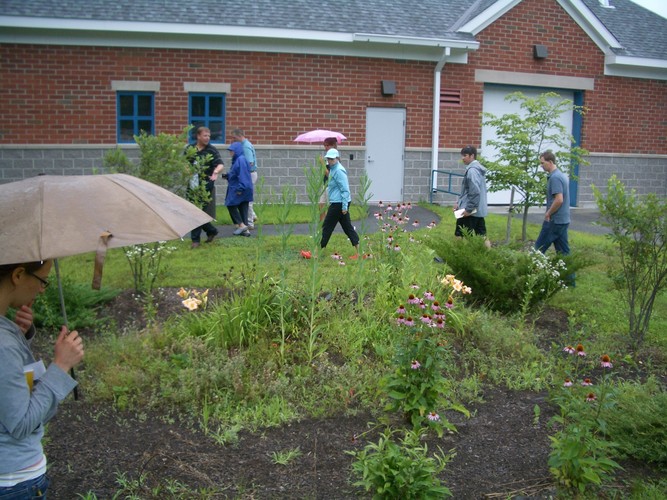
Sharples highlighted the developers who want to "do the right thing" even when up-front costs are greater. He praised the kind of neighborly conscientiousness that doesn't get measured in dollars. He seems optimistic… and it may be just coincidence but Willand Pond's algae has remained under control for about 3 years now.
But Dave was also quick to note, "Not everyone's on board with LID." Traditions die hard, but the 18 attendees of this guided tour were inspired, imagining LID implementation in their own communities. They piled on the questions about filtration systems and bioretention gardens for the rest of the morning.